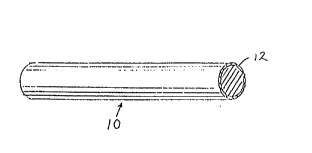Some of the information on this Web page has been provided by external sources. The Government of Canada is not responsible for the accuracy, reliability or currency of the information supplied by external sources. Users wishing to rely upon this information should consult directly with the source of the information. Content provided by external sources is not subject to official languages, privacy and accessibility requirements.
Any discrepancies in the text and image of the Claims and Abstract are due to differing posting times. Text of the Claims and Abstract are posted:
| (12) Patent: | (11) CA 2042811 |
|---|---|
| (54) English Title: | METHOD FOR MANUFACTURING NAILS |
| (54) French Title: | METHODE DE FABRICATION DE CLOUS |
| Status: | Deemed expired |
| (51) International Patent Classification (IPC): |
|
|---|---|
| (72) Inventors : |
|
| (73) Owners : |
|
| (71) Applicants : | |
| (74) Agent: | FINLAYSON & SINGLEHURST |
| (74) Associate agent: | |
| (45) Issued: | 1998-02-03 |
| (22) Filed Date: | 1991-05-17 |
| (41) Open to Public Inspection: | 1991-12-09 |
| Examination requested: | 1994-04-22 |
| Availability of licence: | N/A |
| (25) Language of filing: | English |
| Patent Cooperation Treaty (PCT): | No |
|---|
| (30) Application Priority Data: | ||||||
|---|---|---|---|---|---|---|
|
Nails suitable for outdoor use, such as
roofing nails, are formed from carbon steel wire
pre-coated with a metallic layer, which has corrosion-resistant
properties, such as a zinc layer applied by
pre-galvanizing the wire. Each nail is formed with a
shank and with a head. The metallic layer is
discontinuous in a region on the head of each nail. The
nails are collated by means of collating wires welded to
the shanks of the nails. The collated nails are coiled.
The coiled nails are cleaned in a cleaning bath, such as
1,1,trichloroethane. The cleaned nails are coated with
a polymeric layer, which covers the region on the head
of each nail where the metallic layer is discontinuous,
thus restoring the corrosion-resistant properties of the
nails.
Clous pour utilisation à l'extérieur, par exemple clous pour toitures, fabriqués à partir d'un fil d'acier au carbone recouvert d'une première couche métallique antirouille, par exemple une couche de zinc, appliquée en prégalvanisant le fil. Chaque clou comporte une tige et une tête. La couche métallique est discontinue dans une région de la tête de chaque clou. Les clous sont assemblés au moyen de fils soudés à la tige des clous. Les clous sont ensuite formés en spirale, nettoyés dans un bain composé par exemple de 1,1 trichloroéthane, et ensuite recouverts d'une couche de polymère appliquée sur la région de la tête de chaque clou où la couche métallique est discontinue, ce qui confère aux clous des propriétés anticorrosives.
Note: Claims are shown in the official language in which they were submitted.
Note: Descriptions are shown in the official language in which they were submitted.

For a clearer understanding of the status of the application/patent presented on this page, the site Disclaimer , as well as the definitions for Patent , Administrative Status , Maintenance Fee and Payment History should be consulted.
| Title | Date |
|---|---|
| Forecasted Issue Date | 1998-02-03 |
| (22) Filed | 1991-05-17 |
| (41) Open to Public Inspection | 1991-12-09 |
| Examination Requested | 1994-04-22 |
| (45) Issued | 1998-02-03 |
| Deemed Expired | 2004-05-17 |
There is no abandonment history.
| Fee Type | Anniversary Year | Due Date | Amount Paid | Paid Date |
|---|---|---|---|---|
| Application Fee | $0.00 | 1991-05-17 | ||
| Registration of a document - section 124 | $0.00 | 1993-01-08 | ||
| Maintenance Fee - Application - New Act | 2 | 1993-05-17 | $100.00 | 1993-05-14 |
| Maintenance Fee - Application - New Act | 3 | 1994-05-17 | $100.00 | 1994-04-21 |
| Maintenance Fee - Application - New Act | 4 | 1995-05-17 | $100.00 | 1995-04-25 |
| Maintenance Fee - Application - New Act | 5 | 1996-05-17 | $150.00 | 1996-04-17 |
| Maintenance Fee - Application - New Act | 6 | 1997-05-20 | $150.00 | 1997-04-22 |
| Final Fee | $300.00 | 1997-10-23 | ||
| Maintenance Fee - Patent - New Act | 7 | 1998-05-19 | $150.00 | 1998-05-11 |
| Maintenance Fee - Patent - New Act | 8 | 1999-05-17 | $150.00 | 1999-05-03 |
| Maintenance Fee - Patent - New Act | 9 | 2000-05-17 | $150.00 | 2000-05-03 |
| Maintenance Fee - Patent - New Act | 10 | 2001-05-17 | $200.00 | 2001-05-03 |
| Maintenance Fee - Patent - New Act | 11 | 2002-05-17 | $200.00 | 2002-05-02 |
Note: Records showing the ownership history in alphabetical order.
| Current Owners on Record |
|---|
| ILLINOIS TOOL WORKS INC. |
| Past Owners on Record |
|---|
| GABRIEL, WILLIAM LEON |
| HEMINGER, DAVID |
| LAT, GERONIMO E. |
| SHELTON, LAWRENCE S. |